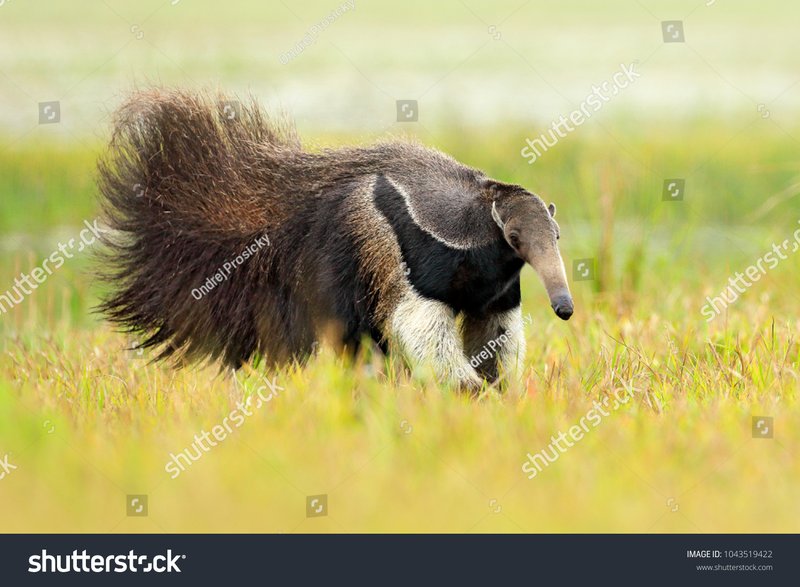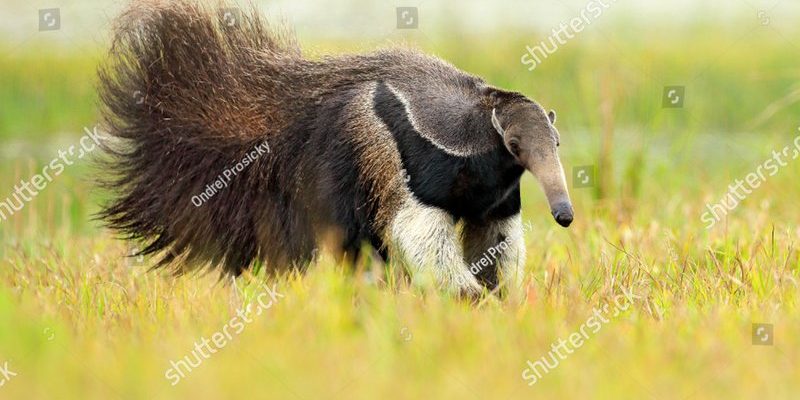
Before we dive into the nitty-gritty of how anteaters contribute to their ecosystems, let’s clarify a bit about this fascinating animal. Anteaters, belonging to the suborder Vermilingua, include various species like the giant anteater and the silky anteater. They primarily feast on ants and termites, using their specialized tongues to extract these tiny critters from their nests. So, how do these quirky animals fit into the grand puzzle of nature? Let’s explore!
1. The Role of Anteaters in Pest Control
You might be curious about how anteaters help manage insect populations. Well, these animals are like nature’s pest control agents. By consuming massive amounts of ants and termites, anteaters help keep these insect populations in check. Just imagine a garden overrun by ants—without anteaters, those little pests could become a real problem, devouring plants and disrupting the balance of their habitat.
Anteaters can eat upwards of 30,000 insects in a single day! Their long, sticky tongues are a perfect tool for reaching into narrow crevices where ants and termites hide. This means they can access areas other predators might not reach, making them invaluable for controlling these populations. Plus, by eating these insects, anteaters help prevent them from overpopulating, which could lead to increased competition for food resources among other animals.
Moreover, this predatory behavior contributes to the health of the ecosystem. Healthy insect populations are crucial for the flora, as many plants depend on certain insects for pollination. So, when anteaters feast on ants and termites, they inadvertently support a whole web of life that relies on balance.
2. Soil Aeration and Nutrient Recycling
Let’s talk about the impacts anteaters have on soil health. You might not think about it, but when an anteater digs around for its next meal, it’s doing way more than just searching for food. By tunneling into ant hills and termite mounds, anteaters aerate the soil. This is akin to how a gardener might turn over soil to make it better for planting.
Aerated soil allows water, nutrients, and air to penetrate deeper, which benefits plants. With healthy soil, you’ll likely see the growth of more robust vegetation. And guess what? Healthy plants are essential for supporting not only the anteater’s diet but also the diets of countless other animals in the ecosystem.
Moreover, as anteaters consume ants and termites, they also contribute to nutrient recycling. When these insects are consumed, their remains enrich the soil. This combination of aeration and nutrient recycling helps to foster a thriving environment for various plant and animal species. It’s a perfect example of how interconnected everything is in nature.
3. Anteaters as Indicators of Ecosystem Health
You might be wondering how the health of anteater populations can reflect the state of their environment. Well, anteaters are considered bioindicators. This means their presence, absence, or overall health can provide valuable insights into the ecosystem’s condition.
If anteater populations decline, it could signal problems like habitat destruction or pesticide use affecting their food sources. Since they primarily feed on ants and termites, their health directly correlates to the abundance of these insects. If anteaters are thriving, it often means that their ecosystem is balanced and healthy.
In many respects, observing anteaters can be like having a barometer for the well-being of the entire habitat. Their observations can help conservationists determine if interventions are necessary to protect or restore the ecosystem. Keeping an eye on these quirky creatures can lead to more significant efforts in environmental preservation.
4. The Relationship Between Anteaters and Other Species
The anteater doesn’t just exist in a vacuum; it interacts with various species in its ecosystem. For instance, when anteaters dig into ant or termite mounds, they inadvertently provide access to these insects for other animals, like birds or smaller mammals. It’s like they’re hosting a buffet that everyone can enjoy!
Additionally, by feeding on certain types of ants and termites, anteaters help prevent any one species of insect from dominating the landscape. This balance creates a diverse habitat where different plant and animal species can thrive. It’s crucial for maintaining biodiversity—an essential aspect of a healthy ecosystem.
This interconnectedness shows the importance of each species in the food web. Losing anteaters could lead to an overabundance of insects, which may, in turn, affect plant life and the animals that rely on those plants. It’s a delicate balance where every player, including the anteater, has a part to play.
5. Conservation Challenges Facing Anteaters
Despite their crucial roles, anteaters are facing significant threats. Habitat loss due to deforestation and agricultural expansion poses a severe risk to their populations. Imagine living in a house that’s slowly falling apart around you—that’s what it’s like for these animals when their natural habitats are destroyed.
Additionally, climate change alters their ecosystems, affecting the availability of food sources. With rising temperatures and changing weather patterns, anteaters may find it challenging to locate ants and termites, which could lead to declines in their populations.
Conservation efforts are essential to ensure that these unique animals continue to play their pivotal role in the ecosystem. Protecting their habitats through sustainable practices and responsible land use is key. By creating wildlife reserves and promoting awareness, we can help safeguard anteaters and, in turn, the health of their ecosystems.
6. The Fascinating Biology of Anteaters
The biology of anteaters is just as interesting as their ecological role. With their elongated snouts and powerful forelimbs, they’re perfectly adapted to their diet. Their claws are incredibly strong and perfect for breaking into tough ant mounds. It’s like nature equipped them with built-in tools!
Their long, sticky tongues can stretch up to 16 inches, allowing them to reach deep into nests. Plus, anteaters have no teeth, which is why they swallow their food whole. Instead, they rely on their stomachs to break down the hard exoskeletons of insects, aided by powerful acids. This specialized diet allows them to thrive in environments where many other animals struggle.
This remarkable biology is a testament to how evolution shapes creatures to fit into specific niches. Anteaters are unique not just in looks but in how they contribute to their ecosystems, reminding us that every species has a role to play.
7. The Cultural Significance of Anteaters
Anteaters hold a special place in various cultures, symbolizing different qualities. In some South American cultures, they are seen as champions of humility due to their unassuming lifestyles, choosing to live quietly and beneficially within their ecosystems. This cultural significance can influence conservation efforts, as communities might feel a deeper connection to these animals.
Storytelling often features anteaters, emphasizing their unique traits and roles within nature. This recognition can aid in conservation campaigns, helping inspire people to protect these animals and their habitats. Creating awareness of their ecological importance can lead to increased efforts to preserve both anteaters and the ecosystems they inhabit.
Ultimately, anteaters are more than just unique-looking creatures; they embody the interconnectedness of life. By understanding their role in the ecosystem, we can better appreciate the need to protect these amazing animals and their habitats for future generations.
In conclusion, the anteater’s role in its ecosystem is multi-faceted and essential for maintaining balance in nature. From pest control and soil health to signaling ecosystem health and interacting with other species, anteaters truly are fascinating animals. As we face conservation challenges, it’s crucial to recognize their importance and work toward protecting them. Let’s cherish and safeguard these unique creatures for a healthier planet.

